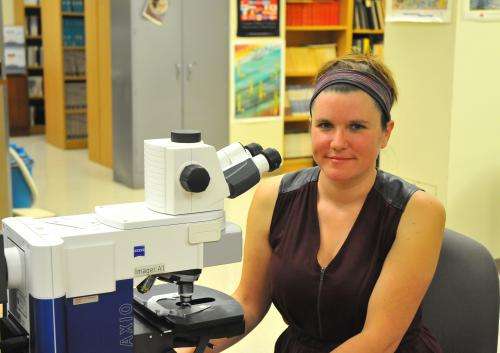Research team studies 'regime shifts' in ecosystems

The prehistory of major ecological shifts spanning multiple millennia can be read in the fine print of microscopic algae, according to a new study led by researchers at the University of Nebraska-Lincoln.
The study analyzed a community of more than 100 diatom species found in 7,000-year-old sediment extracted from Montana's Foy Lake. Examining the diatoms' abundance and structure across 800 points of geologic time allowed the researchers to investigate "regime shifts," which traditionally describe abrupt changes in the state of an ecosystem.
However, the study found that the transitional periods between regime shifts may last significantly longer than typically thought—potentially as long as 2,000 years.
The authors noted that transitional periods are characterized by instability and less ecological resilience to extreme climate patterns such as drought. They could also exhibit greater susceptibility to anthropogenic, or human-driven, forces.
"Understanding when and why ecosystems change is pretty important to virtually everyone, because we all live in ecosystems and depend on them," said Trisha Spanbauer, the study's lead author and a UNL doctoral student in Earth and atmospheric sciences.
Prolonged transitions between regime shifts could mean that early signs of those shifts appear long before an ecosystem actually settles back into stability, Spanbauer said.
While pointing to the diatom community as an example of how ecosystems react to external forces, the study also noted that the delay in such responses could give rise to the false impression that a fluctuating ecosystem is actually a stable one.
"Given that resources and ecosystems are managed according to an agreed-upon baseline, this may be troublesome for systems that are in a period of instability capable of lasting for a couple of thousand years," Spanbauer said.
Consequently, the effective management of an ecosystem depends on accurately assessing its current state, she said. The research team tested several methodological techniques for examining changes in the diatom species, which are sensitive to water depth changes associated with drought.
Though certain single-variable indicators have been proposed to serve as early signs of a regime shift, the team found that these sometimes provided ambiguous evidence for it. However, a multivariable technique that collapsed information from all the species into one index showed promise for detecting the ecological instability that precedes a regime shift, Spanbauer said.
Another technique that models fluctuations in species over time provided data that complemented the multivariable approach. Spanbauer said the complementary techniques require no prior knowledge of an ecosystem's structure or dynamics, a key advantage over other methods.
"Using paleo-ecological time-series data with these types of methods allows us to test theoretical ideas with empirical data," Spanbauer said. "This also allows us to extend our knowledge of ecosystems beyond the human-recorded history of an ecosystem, giving us insight into the impact of past climate change."
The article was published Oct. 3 in the peer-reviewed journal PLOS ONE.
Journal information: PLoS ONE
Provided by University of Nebraska-Lincoln


















